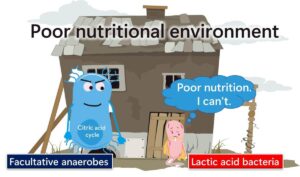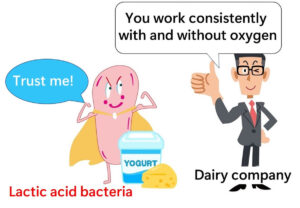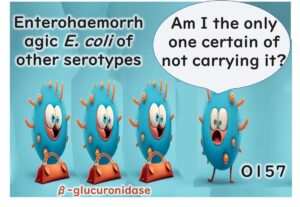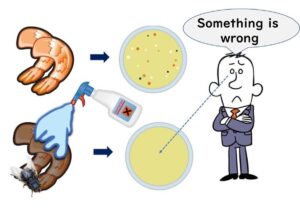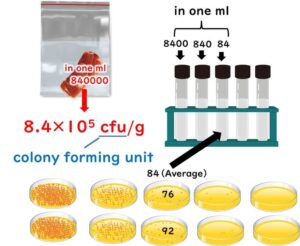Overflow Metabolism and the Unique Adaptations of Lactic Acid Bacteria
In this article, we’ll explore the fascinating phenomenon of overflow metabolism and how it plays a crucial role in lactic acid bacteria's survival and functionality. We’ll also define and classify lactic acid bacteria, examining their unique traits and adaptations that make them essential in food preservation and fermentation processes. By understanding why these bacteria rely on lactic acid fermentation even in oxygen-rich environments, we gain insight into their metabolic choices and the advantages they offer.
The Unique Metabolic Characteristics of Lactic Acid Bacteria
Welcome to our in-depth exploration of the unique metabolic traits that set lactic acid bacteria apart from other Gram-positive bacteria. In this article, we’ll uncover why lactic acid bacteria lack catalase and instead use NAD peroxidase to thrive in environments both with and without oxygen. Let’s dive into the fascinating metabolic mechanisms that make lactic acid bacteria ideal for various food fermentation processes.
Are We Missing Something? A Closer Look at Substrate Enzyme Media as Indicators in Microbial Testing
Once upon a time, a colleague of mine shared a rather intriguing story. They had proposed to their boss to switch from testing for fecal coliforms (think E. coli, the notorious block party crasher) to using a substrate enzyme medium that utilizes β-glucuronidase activity. However, their boss shot down the idea with the objection that this medium wouldn’t cover the infamous E. coli O157:H7. So, what’s the real scoop here? Are we overlooking some vital points in our understanding?
MRS Media: Tailored Nutrition for the Special Needs of Lactic Acid Bacteria
Explore the intricate relationship between the unique nutritional requirements of lactic acid bacteria (LAB) and their ideal growth environment provided by MRS (de Man, Rogosa, Sharpe) media. This article highlights how MRS media, formulated with rich sources of animal proteins, vitamins, and selective growth inhibitors, caters specifically to the demanding dietary needs of LAB. By offering insights into the selective properties and nutrient composition of MRS media, we reveal its critical role in fostering the proliferation of LAB, even in the challenging conditions of laboratory research and food safety testing. In this article, let’s get to grips with just how selective media like MRS agar really are for culturing lactic acid bacteria. We'll dive into the components that make up these media.
Deciphering Culture Medium Components: A Key to Effective Bacterial Testing
In this article, we emphasize the critical importance of understanding the components within culture mediums, especially in relation to how bacteria's varying sensitivities to hydrophobic functional groups are exploited in food safety testing. We explore the strategic application of this knowledge in using desoxycholate agar and BGLB broth for testing coliforms. Dive into how mastering the intricacies of medium components not only enhances the accuracy of bacterial detection but also reflects the clever subtleties of microbiological science. Ready to unravel the secrets behind each ingredient?
Navigating International Differences in Standard Plate Count Methods for Food
When interpreting standards for standard plate count (SPC) in food, it’s crucial to understand that the method of testing and measurement can vastly influence the outcome. In fact, the definition itself might change! This article highlights the methods used to test for standard plate count in food, with a special focus on contrasting approaches between the United States (AOAC method) and the European Union (ISO method), emphasizing the broader international discrepancies. Don your lab coats and prepare for a microscopic adventure into the world of food microbiology, where every detail can lead to a world of difference!
Unveiling the Truth About Standard Plate Counting: A Crucial Tool in Food Safety Management
In this detailed article, we revisit the significance of Standard Plate Counting (SPC), a fundamental microbiological test integral to food safety practices. Often referred to as Mesophilic Count or Aerobic Plate Count, SPC measures bacteria in food samples that grow aerobically at mesophilic temperatures. However, it's crucial to acknowledge its limitations, such as not detecting certain microbial groups like anaerobes or microaerophiles. This exploration discusses the intricacies of SPC, its application under various international standards, and its role not as a definitive indicator of food poisoning risk but as a vital tool in assessing the sanitary handling and temperature management of food products.
Standard Plate Count: A Beginner's Guide to Measuring Bacteria in Food Microbiology
In this article, we're taking you on a delightful dive into the world of food microbiology, specifically geared towards those just starting out. We won't be diving into the nitty-gritty of a full-blown experimental manual here. Instead, think of this as your friendly illustrated guide to understanding how bacteria are measured using the "standard plate count" method.
A Natural Antimicrobial Agent Transforming Food Preservation and Medicine
In our ongoing exploration of food preservatives, we delve into the fascinating world of nisin, a natural antimicrobial agent that has carved a niche for itself in the global food industry. Originally discovered in fermented milk in 1928, nisin has been celebrated for its effectiveness and safety, receiving approval from various health authorities worldwide, including the FAO/WHO and the U.S. FDA. This article examines nisin’s journey from a humble natural discovery to a cornerstone in food preservation, highlighting its unique properties, mechanisms of action, and its emerging significance in the medical field against antibiotic-resistant bacteria. Join us as we uncover how nisin, a polycationic peptide and a member of the bacteriocins family, continues to make significant contributions to both food safety and human health, proving itself as a vital tool in our antimicrobial arsenal.
How Glycine Extends the Microbiological Shelf Life of Japanese Convenience Foods
In Japanese convenience stores and supermarkets, the simple amino acid glycine plays a pivotal role in extending the shelf life of popular foods like bento boxes, side dishes, and bakery sweets. This blog post will explore the antibacterial properties of glycine, its unique function in preventing microbial growth, particularly against bacteria forming heat-resistant spores, and its contribution to the flavor profiles of various foods. Dive into the science behind glycine, understanding why this ingredient is so crucial in keeping your favourite convenience foods both safe and delicious.
